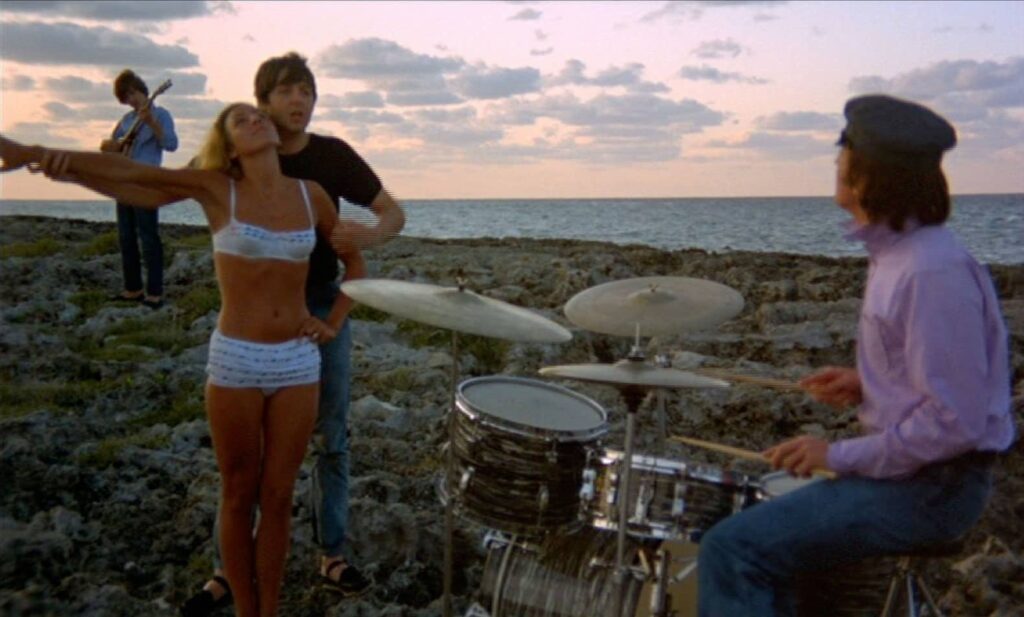A hell of a lot of pot was being smoked while we were making the film. It was great. That helped make it a lot of fun. – Ringo Starr
We went wrong with the picture somehow. – John Lennon

Help! (1965), The Beatles’ second film, wasn’t as revolutionary or influential as A Hard Day’s Night (1964). Still, Help! functions as a highly successful pastiche of British adventure films and orientalism as well as being a marvelous example of sixties Pop art. In a way each Beatles’ film represents a different pole of director Richard Lester’s style. First came the black and white cinéma-vérité A Hard Day’s Night and then came the candy colored campy satire of Help!.
Help!, like its precursor, isn’t a film about plot. Help! is composed of vignettes or “encounters” between the Fab Four and an Eastern cult. Each episode is a sort of isolated comedy sketch where each member of the band takes a turn in the limelight. Ringo, the most competent actor of the four, takes center stage as the film’s real protagonist, even if the most that any Beatle does is simply react to the circumstances unfolding before him.
Fans of the group know that John Lennon referred to 1965 and 1966 as his “fat Elvis” period. Ironically with Lester’s Beatles’ films we find the perfect antithesis to Elvis Presley’s cinematic oeuvre. Elvis, like The Beatles, was not an actor, yet always found himself shoehorned into a plot driven film that inherently made demands of Presley that he just could not satisfy. The episodic structure and minimal plots of The Beatles’ pictures circumvented any need for real acting.
The anti-narrative approach of Help! solidified it’s aesthetic as the new norm for “rock n’ roll” films; Head (1968) would be unimaginable if Help! had not come before it. John Lennon was quick to point out that Help! also paved the way for other similar Pop phenomenons in sixties media such as the Batman television show or even Joseph Losey’s Modesty Blaise (1966).
The real “gift” of Help! was that Lester continued to apply his rapid editing style to the scenes of musical performance while at the same time staging these performances outside of the realm of narrative realism. You’re Going To Lose That Girl is performed in a studio and is motivated by the idea that recording a song is just part of daily Beatle life. However, Ticket To Ride is performed while sledding, skiing, and goofing around at the Swiss Alps without any narrative motivation at all. In the Ticket To Ride sequence Lester and The Beatles move firmly into the realm of the fantastic and chart the path for all music videos to come.
